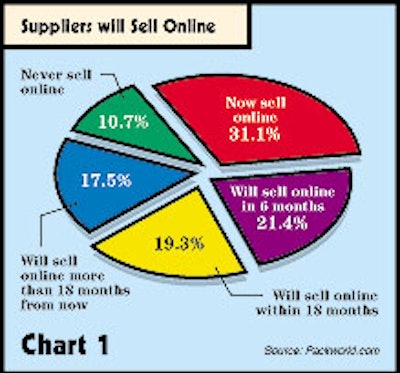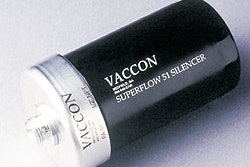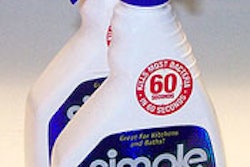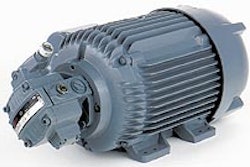
Most suppliers, including machinery and materials distributors, see the Internet as a positive sales vehicle, even if many are unsure how it will work best for their companies. Individual company Web sites are the preferred sources for sales, but many say it’s too early to predict the direction of e-commerce in packaging. Nearly one-third of 280 respondents to a packaging supplier e-commerce intentions survey report their companies already sell some products online (Chart 1), but a stubborn 11% don’t see it in the future at all. Nearly six in 10 said their companies will begin e-commerce in six to 18 months, or in the future. The survey was conducted late last year on Packworld.com, the Web site for Packaging World magazine. When respondents were asked about Internet marketplace neutrality, 54% said they preferred a neutral site, one not owned by buyers, sellers, or industry associations (Chart 2). Still, slightly more than one in five said they would prefer to deal with an industry-supported Web site. When asked about whether buyer or seller should pay the fees for using the marketplace, a surprising 40% of these sellers expected to pay, and another 48% felt the fees should be shared with packaging buyers. The survey also inquired about how the fee for an Internet marketplace should be structured (Chart 3). While nearly 40% preferred an annual “subscription” fee, the remaining respondents were evenly split between fixed transaction fees and fees that were proportional to the amount of the transaction. Respondents were asked about the number of Web sites their companies would use to sell online. While nearly 43% said they’d restrict e-commerce activities to just one or two sites, nearly the same number reported the number of sites simply didn’t matter. Respondents were very specific about the type of Web sites that were expected to provide the greatest sales revenue. Nearly 49% said that their company’s own site would generate the highest e-commerce sales, followed by packaging-specific Internet marketplaces at 29%. Industry-specific sites (i.e., food, pharmaceutical, etc.) logged in at 16%. Other types of sites, including reverse-auction sites, logged under 3% of responses.

























